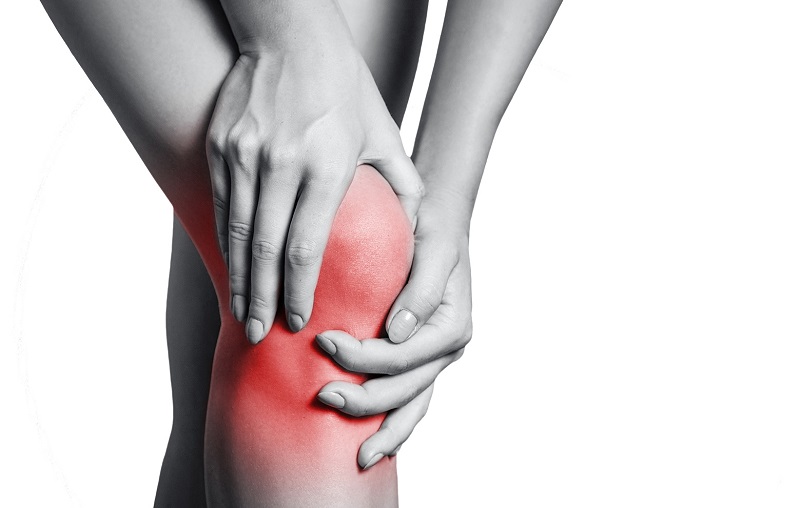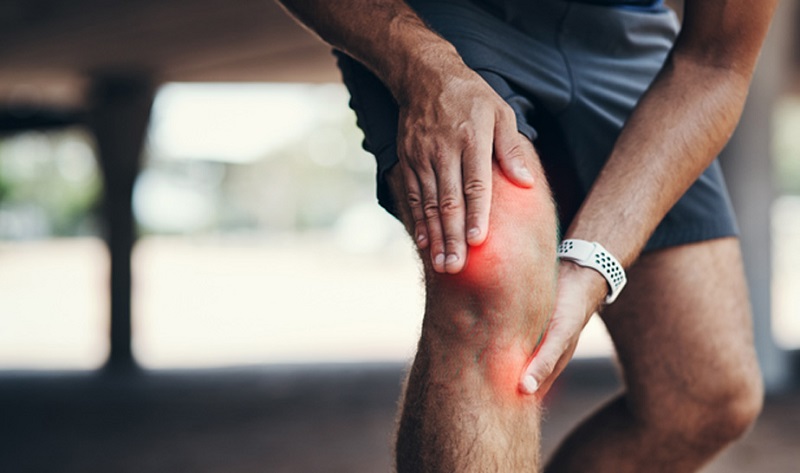Knee pain: how to cure it

The main enemy of the knee is overweight. Five extra pounds of the body means that the knee has to bear an extra thirty pounds. During the acute phase a lot of rest and no walking stairs
KNEE PAIN REMEDIES
It is the most frequent problem of the 187 joints in our body: knee pain. It can be caused by an accident (out of three injuries caused by a rear-end collision, at least one refers to the knee), from excessive exertion during a sporting activity, from jogging to a soccer match, or from an infection. Then, after the age of 40-50, knee pain can no longer be linked to a specific injury, but simply to a more comprehensive phenomenon of osteoarthritis.
KNEE PAIN SYMPTOMS
The symptoms, especially in the initial phase, are three. Redness, swelling, warmth. In the event of an effusion, you will notice a swelling that indicates the leaked liquid and signals the inflammatory process in progress. In any case, knee pain should never be underestimated, and especially if it recurs frequently, it is good to consult a doctor to decide on the appropriate therapy. Meanwhile, here we present the best natural remedies for milder cases and the best forms of prevention to always keep your knees in shape.
You may also like to read does ultrasonic cavitation work. To know more visit our Blog https://www.webmagazinetoday.com/.
HOW TO TREAT KNEE PAIN
Ice packs and hot water. When there is a specific episode, with the knee swelling forming a hematoma, immediately intervene with an ice pack. It has two quick effects: it reduces inflammation and works as a pain anesthetic. Obviously, the ice must be applied at complete rest. If, on the other hand, there is no swelling, but only in this case, use a warm compress that can give you some benefit.
Enemy number one is overweight
Bodyweight is one of the main culprits of knee problems. Under exertion, every pound you weigh is multiplied by six on the knee area. If you are five kilos overweight it means that your knee has to carry around an extra thirty kilos. Too many, and sooner or later problems come.
No elastic bands
Elastic knee wraps are on sale in pretty much any good sporting goods store, but the experts we consulted say they are best left on display. Some piston rings are really useful on a preventive level, but they are very complicated and must be made to measure. Elastic bands sold in sports stores can be used at best as a reminder that you have a troubled knee. Otherwise pushing the kneecap into the joint can do more harm than good.
Try the rubefacient creams
Some wintergreen (or methyl salicylate) lotions produce heat, and the heat can relieve symptoms and make you feel better. If after applying the lotion you cover the knee with plastic and then bandage it, the heat increases. But be careful not to burn the skin or cause irritation. As for over-the-counter medicines, ibuprofen is the most effective and is the recommended over-the-counter pain reliever. It reduces inflammation and pain without causing any stomach problems of aspirin.
Hot oils
The most effective are coconut oil and olive oil. They should be boiled in a saucepan, and then passed gently on the painful part of the knee. Here they must rest for at least a couple of hours to take effect. Repeat this a couple of times a day.
Ginger extract
You can buy it directly at the herbalist’s shop or, better, prepare it in the form of an infusion with the roots bought from the greengrocer. Ginger is anti-inflammatory, and according to some scientific research, it is very useful as a prevention for the knee.
A green clay wrap
Green clay contains magnesium, silica, calcium, and potassium. These are all substances, which thanks to a compress to be repeated a couple of times a day, can help both to deflate the knee and to eliminate pain.
Exercises to avoid
During the pain phase, absolutely avoid climbing stairs on foot. If you have knee weakness, don’t clean floors, don’t carry weights, don’t walk on slippery floors. And don’t smoke.
Exercises to strengthen
The only thing holding a knee together are the muscles and tendons. Strengthening the knee muscles is essential because the muscles are the real support structure. If they are weak or cannot withstand exertion, sooner or later you will have problems with your knees. This means you need to get some exercise, even if you can’t suffer from it. Stronger muscles mean a stronger joint, better able to withstand the considerable fatigue that even an activity such as walking or climbing stairs causes in the knee. So keep exercising. The parts to be strengthened are the quadriceps and the hamstrings. For the quadriceps (the muscles on the front of the thigh). Sit on the ground with the painful knee straight in front of you. Place a rolled-up towel under the knee then tense the leg muscles without moving the knee. Maintain the contraction: with training, you should be able to hold it for at least 30 seconds, then relax the muscles. Repeat twenty-five times.
Seated Leg Raise
Another good exercise and the best way to do leg raises for those with weak knees. Sit with your back against a wall and place a pillow behind your waist. Sitting against a wall ensures that the lifting is really done by the legs, so as not to make the back situation worse. When you are in a position do the isometric contraction we explained above for counting to five, then lift your legs a few inches and lock, count to five, then lower your legs and relax, counting to five. Try to do three sets of ten lifts, always counting on the pace of five.
Change your shoes
If the shoes no longer hold up to bumps, the bumps have to go somewhere. They go into your feet, then up your shins and into your knee, sometimes they continue and reach your hips and back. An athlete who runs forty or fifty kilometers a week needs a new pair of shoes every two or three months. If he runs less, even every four or six months. Anyone who does aerobic dance, basketball or tennis, and exercises twice a week will likely need new shoes every four or six months. If a sportsman works four times a week or more, he too will need new shoes every two months. But many in this ear do not hear us.
Downshift gears
Many experts appreciate cycling, both on stationary bikes and outdoors, as an alternative to the strain and pain in the knee caused by running. But cycling is a good way to stay in shape by relieving the weight on your knees only if you use the appropriate precautions. Cyclists also have knee problems, especially if they think that by pedaling harder they get more exercise. So, depending on the cycling you do (there is no need to climb hairpin bends), even the bike can be too demanding. What you need is to ride fast with gears that you feel comfortable with.
Find the point that triggers the pain
There is a point on the inside of the thigh that contributes to what we call weak knee syndrome. This sensitive spot is also responsible for many general pains inside the knee. To eliminate this type of pain, raise the hand vertically, from the patella along the thigh for about ten centimeters, then inwards for six or twelve centimeters. Press the sensitive spot, firmly, with the pad of the thumb, and hold the pressure until you feel the muscle relax. This can take 30 or 90 seconds. Then let it go.


